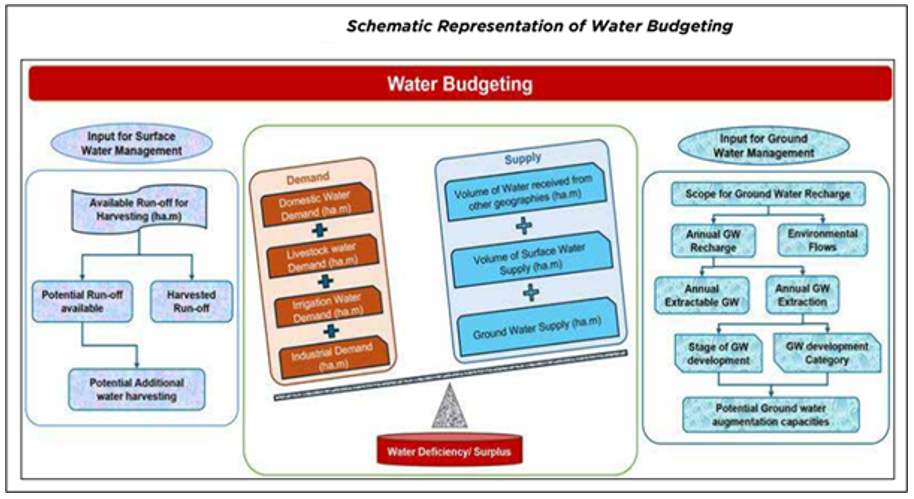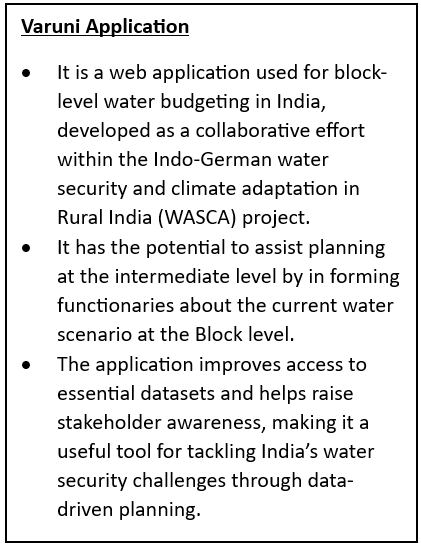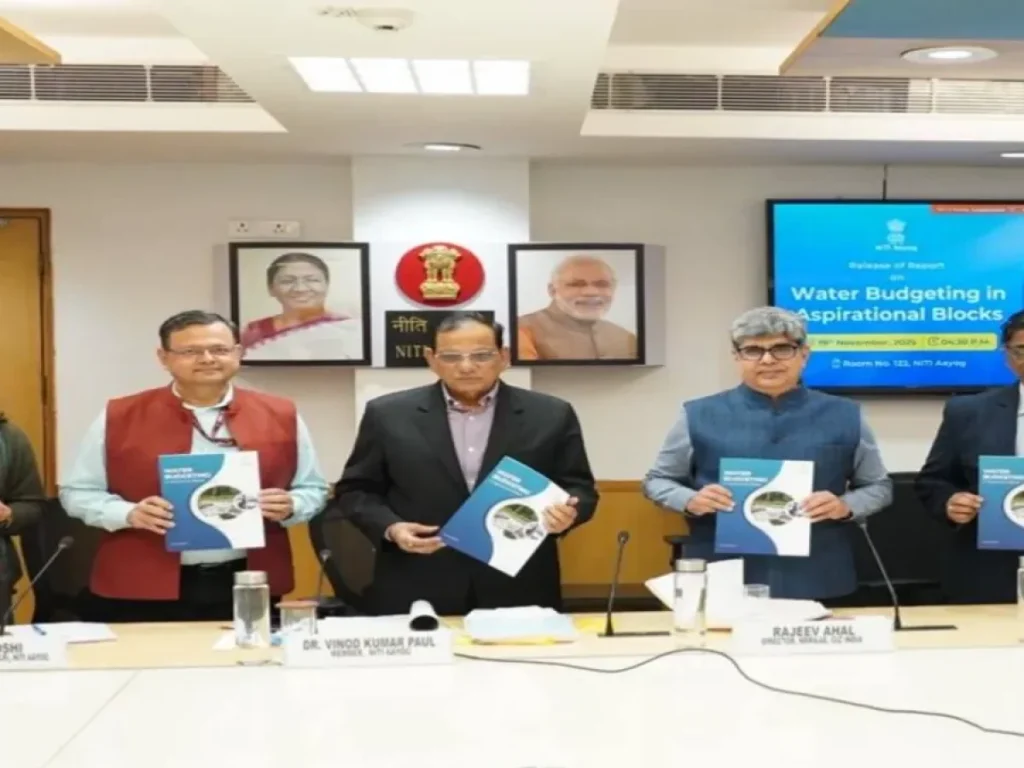SYLLABUS
GS-2: Government policies and interventions for development in various sectors and issues arising out of their design and implementation
GS-3: Conservation, environmental pollution and degradation, environmental impact assessment
Context:
Recently, NITI Aayog released a report on “Water Budgeting in Aspiration Blocks” to strengthen local water security.
More on the News
- NITI Aayog prepared the report using data from the respective Ministries and Organisations, along with information submitted by States through the VARUNI web-based application.
- NITI Aayog developed this framework with strong support from the Indo-German water security and climate adaptation in Rural India (WASCA) project and central ministries.
- The system integrates data from multiple sources such as Census, groundwater (IN-GRES), land use, rainfall, MI Census, and Water Body Census into a comprehensive budgeting tool.
About Water Budget

- It is a crucial tool for water management planning. It provides a comprehensive view of how much water is available from different sources, how it is utilised, and where shortages or surpluses might arise.
- It systematically accounts for all water inflows, outflows, and storage changes within a specific geographic area.
Key Highlights of the Report
Components of Water Demand:
- Domestic Water Demand: Domestic water demand differs across regions—55 litres per capita per day (lpcd) in rural areas (JJM norms) and 150 lpcd in urban areas (Central Public Health & Environmental Engineering Organisation (CPHEEO) norms).
- Livestock Water Demand: Livestock water demand is estimated using the latest livestock census and the Indian Council of Agricultural Research’s daily water requirement norms for each animal type.
- Agricultural Water Demand: Crop Water Requirement (CWR) is central to estimating this demand. National irrigation needs are projected at 611 Billion Cubic metres (BCM) for 2025 and 807 BCM for 2050.
Components of Water Supply:
- Surface Runoff (Strange’s Table Method): Runoff is calculated based on land use classification and average rainfall.
- Surface Water Supply: Determined by the storage capacity of surface water structures
- Water Sourced from Outside Geography: Includes inter-basin and long-distance water transfers from irrigation, drinking water, and industrial projects.
- Varuni Web-Based Water Budgeting Application: Integrates data automatically from authentic portals for calculating water demand and supply.

Major Outcomes of the Exercise
- The Varuni water budgeting application has been piloted in 18 aspirational blocks across varied state/agro-climatic zones in India.
- The Block-level analysis across various regions reveals significant diversity in water resource availability, usage patterns, and associated challenges.
Key Action Points: This assessment underscores the urgent need for integrated water resource planning tailored to diverse agro-ecological zones to ensure water security and resilience:
- Water Deficits: Several Blocks face critical water shortages (Namchi 94%, Gangiri 60%, Baldeogargh 53%, Andimadam 42%, Abu Road 41%), highlighting the need for urgent, region-specific water management strategies.
- Overexploitation: Blocks like Kotri and Abu Road have groundwater development exceeding 100%, risking resource depletion.
- Underutilization: Surface water is underused in areas such as Fatehpur, Buxwaha, and Abu Road, signalling opportunities for better infrastructure and management.
- Regional Priorities: Interventions must be context-specific coastal Blocks should focus on managing salinity, Bundelkhand on groundwater recharge and surface storage, and the Himalayan regions on protecting springs.
Sources:
News On Air
PIB

